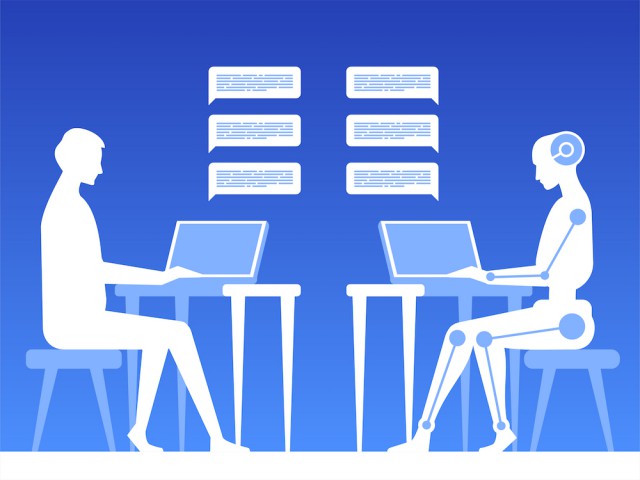What you need to know about chatbots

As consumers become bombarded with more and more advertising both online and in the real world, the challenge of directly appealing to customers is a challenge facing businesses both large and small.
Combining the intelligence of machine learning and AI systems with the personal touch of technology platforms such as instant messaging apps or mobile devices, chatbots could soon be the best way for businesses to directly reach out to their individual customers.
The programs look to converse with human users through an app or online service, responding to questions posed by the user and responding as best as they can to simulate a real conversation.
Until recently the dream of science-fiction writers, chatbots have now enjoyed a surge in popularity in recent months as businesses around the world seek a way to directly interact with customers through the apps and services they use the most.
Whether this is through instant messaging services, personal assistants such as Siri or Cortana, or customized online agents to walk them through purchases, chatbots are becoming an increasingly popular sight online.
What are some of the different kind of chatbots?
Due to the wide-ranging use cases of chatbots, there are a number of different potential services that can use the technology.
Currently, most popular uses of chatbots are through messaging apps and services, allowing customers to talk directly to a business, or vice versa.
Many companies are using chatbots to provide online assistance and helpdesk facilities to customers, meaning they no longer need to spend time waiting to speak to a customer services representative on the phone.
Popularized by Facebook Messenger, chatbots are also being used by companies to reach out to users through instant messaging services. This can be in a customer service facility, much like the above example, or alternatively to send push notifications or vouchers to customers that might be in a particular location, or signed up to loyalty schemes.
Chatbots can also be found in many leading mobile devices around today in the form of personal assistant services. The likes of Siri (Apple iOS), Cortana (Microsoft Windows) and Google Assistant (Android) can arguably be classed as chatbots, as they are able to use AI and machine learning to respond to questions. Some services are even able to link to external apps and services to provide richer experiences, such as weather updates, travel times, or even restaurant reservations.
The Internet of Things has also proved to be a valuable use case for chatbots, allowing devices to send alerts or updates whenever they detect something worth noting.
How accurate can chatbots be?
The accuracy of chatbots very much depends on the company behind the service, and the use case it is addressing.
If acting as an online helpdesk, or promotional IM tool, it is highly likely that the service will be linked to an underlying script, and deviating from this may cause the system to crash.
The same can be seen in voice-activated services such as Siri or Google Assistant, where the platform is designed to pick up on specific vocal cues or keywords, and respond accordingly.
Ultimately the challenge will be whether a chatbot is able to pass the famous Turing Test, and fool a human into thinking they are conversing with a real person. Once this hurdle is overcome, many consumers may begin using chatbots more.
Can chatbots have a downside?
As with any new technology, chatbots have had to overcome a number of issues as part of their evolution process.
Several prominent chatbot platforms have suffered issues as part of their development -- most notably Tay, one of Microsoft’s early experiments into AI. Tay, a Twitter bot, was designed to be an experiment in "conversational understanding," but within 24 hours, was targeted with offensive tweets which warped its conception of the world, resulting in a stream of racist and misogynistic replies from the system.
Earlier this year, Facebook was also forced to shut down one of its AI chatbot processes after the system started conversing in a language of its own formation, raising fears it had superseded human control.
Chatbots have also been used to spam well-known chatroom services with adverts and other harmful content as part of criminal attempts to steal personal details. The likes of Yahoo Live Messenger and Skype have both suffered attacks in the past, with users targeted by spambots.
Published under license from ITProPortal.com, a Future plc Publication. All rights reserved.
Photo Credit: Ico Maker/Shutterstock
